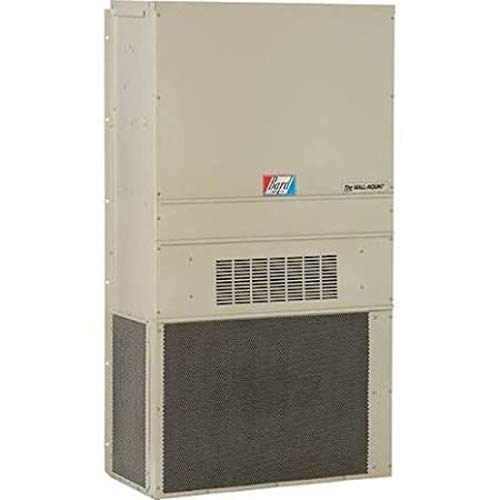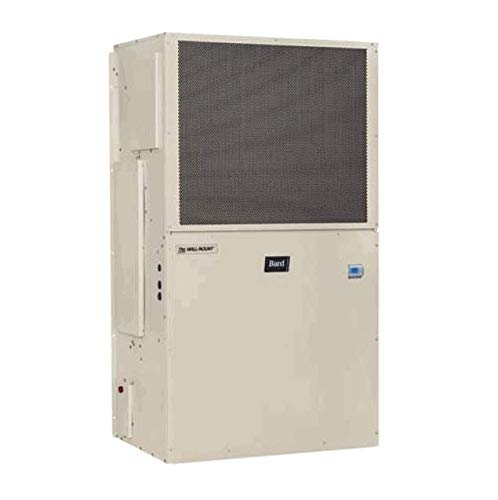When it comes to heating, ventilation, and air conditioning (HVAC) systems, selecting the right unit for your space is crucial. A common choice for larger residential or commercial spaces is the Bard 5 ton HVAC unit. But how do you determine if this unit can adequately cover your square footage needs? In this article, we will explore the specifications, applications, and considerations for Bard 5 ton HVAC units, helping you make an informed decision.
What is a Bard 5 Ton HVAC Unit?

Bard Manufacturing Company, established in 1914, is known for its innovative heating and cooling solutions tailored for a variety of applications. The Bard 5 ton HVAC unit is a packaged air conditioning system, meaning it houses all the components necessary for heating and cooling in one unit. This compact design is particularly beneficial for commercial settings and residential applications where space is limited.
Understanding BTUs and Square Footage

To understand how a Bard 5 ton HVAC unit fits your square footage needs, it’s essential to grasp the concept of British Thermal Units (BTUs). A BTU is a measurement of heat energy, and in HVAC terms, it refers to the amount of energy needed to raise the temperature of one pound of water by one degree Fahrenheit.
The general rule of thumb for cooling and heating capacity is:
- For cooling: 20 BTUs per square foot of living space.
- For heating: 30-60 BTUs per square foot, depending on insulation and climate.
A 5 ton HVAC unit has a cooling capacity of approximately 60,000 BTUs (since 1 ton is equal to 12,000 BTUs). Therefore, it can effectively cool a space of:
- Approximately 3,000 square feet (60,000 BTUs / 20 BTUs per square foot).
Factors to Consider When Sizing Your HVAC Unit

While the square footage is a significant factor, several other considerations can affect the size of the HVAC unit you need:
- Insulation: Better insulation reduces the demand for heating and cooling. If your space is well-insulated, a 5 ton unit may suffice for larger areas.
- Climate: The local climate plays a role. Hotter climates may require more cooling capacity, while milder climates may need less.
- Ceiling Height: Higher ceilings mean more volume to cool or heat, which may necessitate a larger unit.
- Windows and Sunlight: Large windows and direct sunlight can increase cooling needs, especially in summer.
- Occupancy: More occupants generate additional heat, which may necessitate a larger unit or additional cooling capacity.
Case Study: Residential Application

Consider a residential home measuring 2,500 square feet in a moderately hot climate (average summer temperatures around 90°F). The home has good insulation, high ceilings, and several large windows that receive direct sunlight.
Using the general guideline, this home would typically require a 4 ton HVAC unit (50,000 BTUs). However, due to the high ceilings and large windows, it’s prudent to opt for a 5 ton unit to ensure adequate cooling during peak temperatures. In this case, the Bard 5 ton unit provides the necessary coverage while allowing for better energy efficiency and comfort.
Case Study: Commercial Application

In a commercial setting, let’s analyze a 5,000 square-foot office space located in a hot climate with an open layout and standard ceiling height. The BTU requirement for cooling is:
- 5,000 square feet x 20 BTUs = 100,000 BTUs.
In this scenario, a single Bard 5 ton unit (60,000 BTUs) would not suffice. The office would require at least two 5 ton units (120,000 BTUs total) to effectively cool the space. This example illustrates the importance of accurately calculating BTU requirements based on specific conditions.
Benefits of Bard 5 Ton HVAC Units
The Bard 5 ton HVAC unit comes with several benefits that make it a suitable choice for various applications:
- Energy Efficiency: Bard units are designed with energy efficiency in mind, helping to reduce overall energy costs.
- Durability: Built to withstand harsh environmental conditions, Bard units are known for their longevity and reliability.
- Compact Design: The packaged design makes installation easier, especially in spaces where indoor units are impractical.
- Versatility: Suitable for both residential and commercial applications, Bard units can be adapted to various needs.
Installation Considerations

When installing a Bard 5 ton HVAC unit, consider the following:
- Location: The unit should be placed in a location that allows for optimal airflow, away from obstructions.
- Professional Installation: Hiring a certified HVAC professional ensures the unit is installed correctly and operates efficiently.
- Regular Maintenance: Routine maintenance is essential for longevity and efficiency. Regular filter changes and inspections can prevent costly repairs.
Choosing the right HVAC unit for your space can be a daunting task, but understanding the coverage capabilities of the Bard 5 ton unit can simplify the process. By considering key factors such as square footage, insulation, and local climate, you can determine if a Bard 5 ton HVAC unit will meet your needs.
Whether for residential or commercial applications, a Bard 5 ton unit provides efficient cooling and heating solutions when properly sized and installed. Remember, the right HVAC system not only ensures comfort but also contributes to energy savings and a more sustainable environment. With the insights provided in this article, you are now better equipped to make an informed decision for your heating and cooling needs.